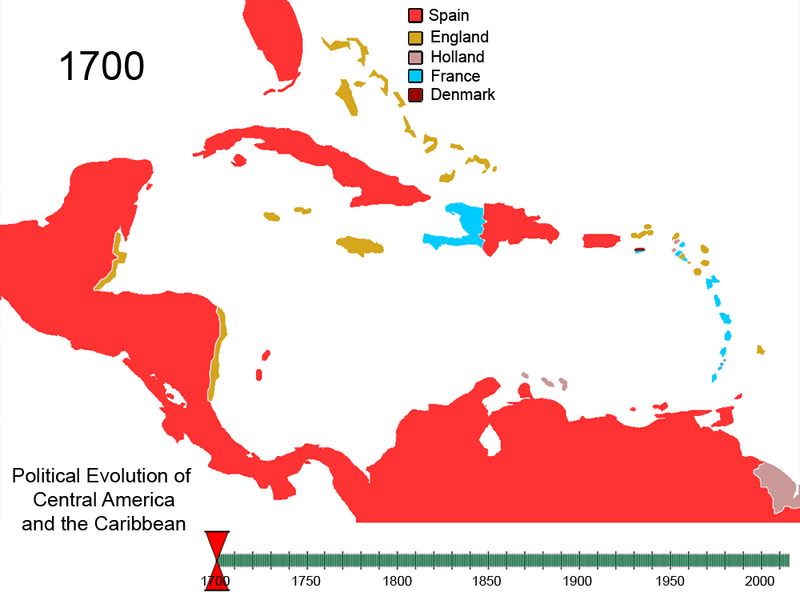Press Releases: Historiography Edition
Ptak – Dunn, Sugar and Slaves
Beyond the Line: Statistics of Sugar and Slaves
Historiography Connections
Social History, Cultural History, Annales School
Geographic Coverage
The English Caribbean (Barbados, Jamaica, Leeward Islands)

Citation for First Edition
Dunn, Richard. Sugar and Slaves: The Rise of the Planter Class in the English West Indies,
1624-1713. UNC Press, 1972.
Press Release
1972’s Sugar and Slaves: The Rise of the Planter Class in the English West Indies represents one of many transitions in the career of its author, Richard Dunn, as he moved from studying the Puritans of New England to the planters of the English Caribbean [1]. The main aspect of this transition is that the Puritans kept many more personal records than their more tropical counterparts [2], and to make up for this Dunn uses other types of historical data to examine the history of these counterparts, including censuses, records of trade, and maps, and examines the developments in the West Indies through a number of different lenses, in the process creating a picture of the English Caribbean that is as complete as a historical work can be.
Content
The content of Sugar and Slaves can roughly be divided into three main sections. In the first section, Dunn provides a general history of the English Caribbean and the circumstances that all of the individual island colonies collectively faced, such as the general trends in the colonies and significant events such as the Anglo-French wars of the late seventeenth century. In the second section he outlines the developments in each island colony in turn, often discussing various important figures such as colonial governors and, in the chapter detailing the specifics of the colony in Jamaica, infamous pirates such as Henry Morgan. In the third section, Dunn delves into how the people of the seventeenth-century Caribbean, from the ludicrously wealthy plantation owners to the slaves who actually generated that wealth, lived, including details such as how they ate, how they dressed, and how they died. As an American historian, Dunn also makes several mentions of the connections and contrasts between the mainland North American colonies and their Caribbean colonies, which helps to contribute to the full view of the Caribbean that Dunn provides.
Methods
In the absence of personal records left behind by the colonists of the English Caribbean, Dunn uses a variety of other sources to substantiate his claims about the English Caribbean, utilizing what personal records there are of the region, censuses, parish records, records of trade, itemized property lists, tax records, maps, and accounts from those sharing a certain perspective of the English Caribbean. Dunn then views this data through a variety of lenses, utilizing many schools of history to interpret the data that he has compiled. By utilizing diversity in both the type of sources he uses and the schools of history in which he utilizes, Dunn is able to provide a full picture of the English Caribbean in the seventeenth and early eighteenth centuries.
Critiques
Dunn is no racist, and Sugar and Slaves consistently lambasts the institution of slavery, but writing in 1972 some of the language used in the book would today be considered outdated. Another disappointment about the book is that while it is not very obtuse, it is also clearly written and targeted to a more academic audience, which is a shame since many of the topics raised are both interesting and important to the general public.
Impact
Written during a time of questioning of colonial narratives in mainland America and Africa, Sugar and Slaves added both meaningful insight into the trend and brought attention to the role of the Caribbean in the institutions of colonialism and slavery that affected the Atlantic world. This narrative still continues to be relevant today – as of the writing of this, the government of Jamaica is actively seeking to press Richard Drax, a sitting member of the British Parliament who still owns his family’s ancestral sugar plantation mentioned in Sugar and Slaves [3], to pay reparations for his family’s role in slavery in the Caribbean [4].
Thrown out of his usual historical routines, Dunn was able to create a very well-rounded work that told a full history of a place during a time when its people would not, or could not, talk about it themselves, and in the process exposed another facet of the colonial legacy that the world now reckons with.
[1] Esemono, “Political Evolution of Central America and the Caribbean 1700”, 2008, Wikipedia, https://upload.wikimedia.org/wikipedia/commons/4/44/Political_Evolution_of_Central_America_and_the_Caribbean_1700.png.
[2] Nicholas Canny, “Richard S. Dunn (In Memoriam)”, Penn Arts and Sciences Department of History. University of Pennsylvania. Accessed November 28, 2022, https://live-sas-www-history.pantheon.sas.upenn.edu/people/emeritus/richard-s-dunn
[3] Dunn, Sugar and Slaves, xxiii-xxiv.
[4] Dunn, Sugar and Slaves, 287-293.
[5] Joshua Nevett, “Richard Drax: Jamaica eyes slavery reparations from Tory MP”, BBC. Written November 29, 2022, https://www.bbc.com/news/uk-politics-63799222

